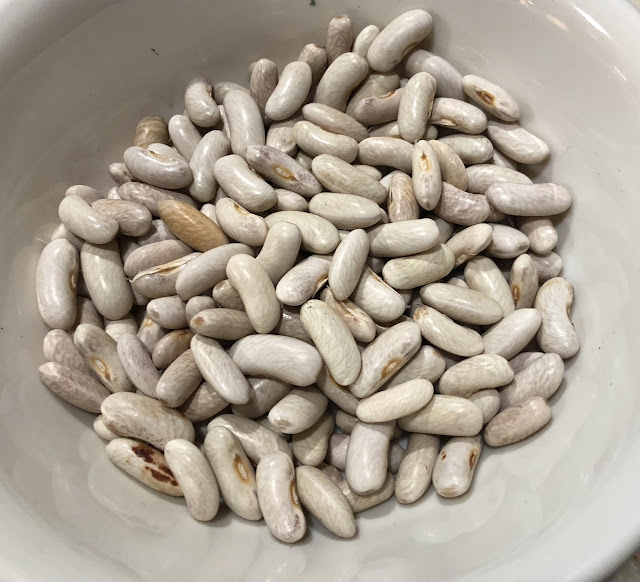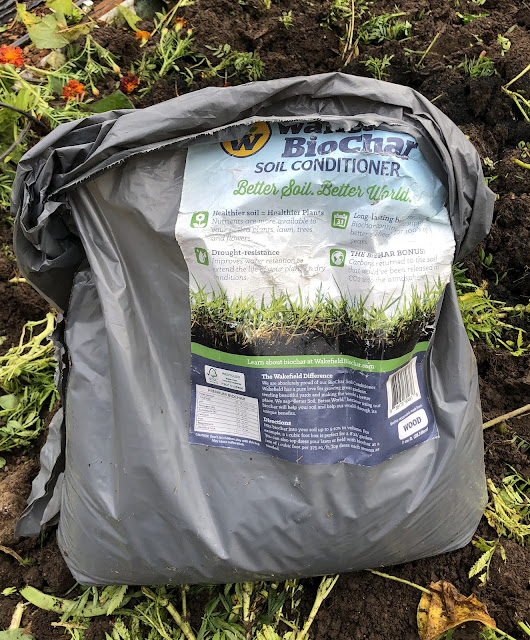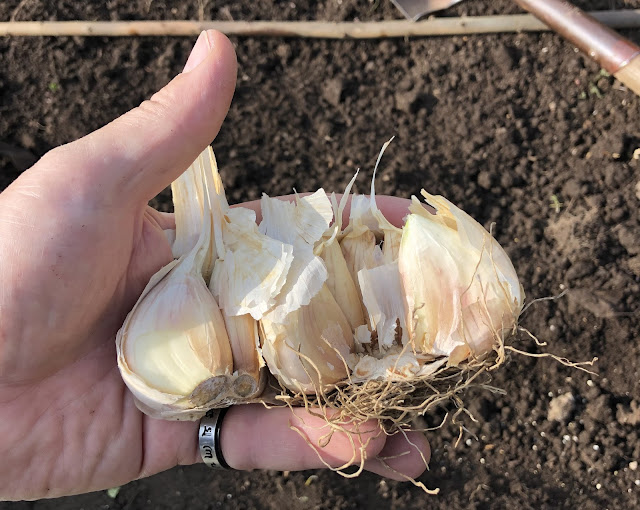The onions did not do well this year. I think the main reason was, I was not able to keep up with weeding and cultivating, and the irrigation lines weren't working well in this bed. Next year, I'll want a different type of emitter. Weeds overwhelmed the onion plants, so that finished most of them off.
On clearing the weeds, I did find a few of the Red Wethersfield onions that survived and made bulbs. Red Wethersfield is an heirloom variety that should come true from seeds, which is why I tried growing it. Plus, I like red onions. I don't want giant ones like in the grocery store, just a nice medium size.
Onions are biennial, This year's bulbs will send up flower shoots next year, to make seeds. So I replanted some of the Red W bulbs, to make seeds next year. Also to see if the make a good size bulb. It's worth a try. I kept a couple of large ones for the kitchen. They are a good tasting onion. Also, I'll keep a couple dry, in the garage, in case the planted ones don't survive the winter. I planted them in a container that had pepper plants this summer.
I also divided shallots and winter onions from one of the raised beds, in this and in another container. I cant tell the difference between some. Some of the shallots also have a rounder, red bulb, and I think some of the winter onions still have stalks, and a narrower, brown skin bulb.
Before planting, I mixed about 1/2 cup of organic bulb fertilizer into the soil mix. It should be slow release, especially in cold weather.
I planted tulips in the front green container .
I still have some onion family plants to sort out, including potato onions (still in one raised bed that I cleaned up), shallots I grew from seeds this year, and Egyptian Walking Onions. Some of those will go into containers. I'm not sure yet. Maybe in the raised bed that is currently occupied by tomatoes, which next year is reserved for onions.


















































